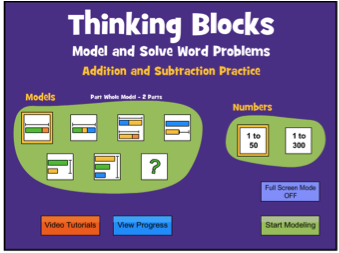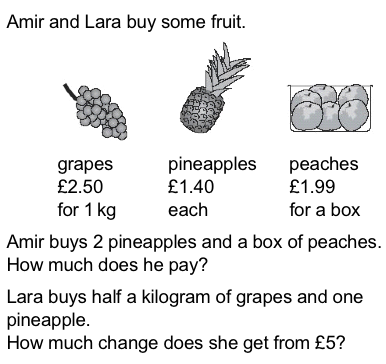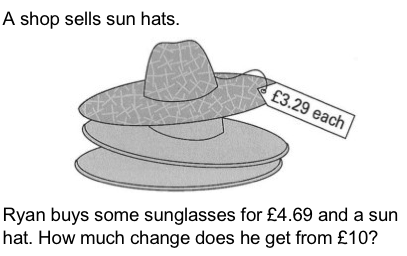| Programme of Study statements |
Activity |
| A |
B |
C |
D |
E |
F |
G |
| Add and subtract numbers with up to 4 digits using the formal written methods of columnar addition and subtraction where appropriate |
|
|
|
|
|
|
|
| Estimate and use inverse operations to check answers to a calculation |
|
|
|
|
|
|
|
| Solve addition and subtraction two-step problems in contexts, deciding which operations and methods to use and why |
|
|
|
|
|
|
|
Pupils should be taught to:
This software shows a clear, interactive version of the use of base ten blocks for addition of two 3-digit numbers. It clearly demonstrates regrouping, and has a useful focus sheet for pupils to guide their work.

This task from Nrich requires children to arrange a pack of 20 cards numbered 1-20 into 6 unequal piles of the same total. A good activity for consolidating mental addition skills and encouraging children to discuss their approaches and ideas. Could it be extended to larger numbers?
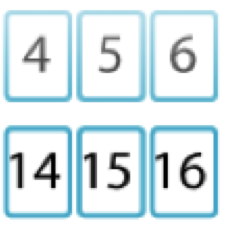
This activity comes from the NCETM Secondary Magazine, and looks at the range of models and images used for addition and subtraction. Challenge the children to sort the cards and think about all the skills they are using.
Activity D – Models and Images
‘Slidey- box’ cards, number trios and the function blocks Interactive Teaching Programme (ITP) can all be used to support children in understanding the concept of inverse operations for addition and subtraction.



This activity from Nrich requires children to use their knowledge of addition and subtraction to add several two digit numbers to reach a target total.
Activity F – Estimating differences
In pairs, children take turns to circle two numbers from a grid such as this:
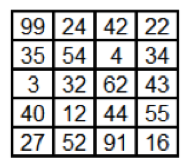
They agree a time period in which to estimate the difference between the two numbers and check the range in which the estimate falls on the chart below. Play continues until all of the numbers are used, and the player with the most points wins.

- Solve addition and subtraction two-step problems in contexts, deciding which operations and methods to use and why
This resource provides a useful introduction to the bar model approach for calculating, with lots of ideas for problems to use in the classroom. Additional resources can be found at the ‘Thinking Blocks’ website
